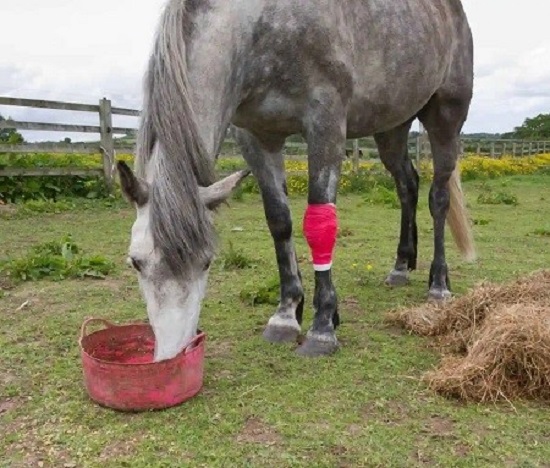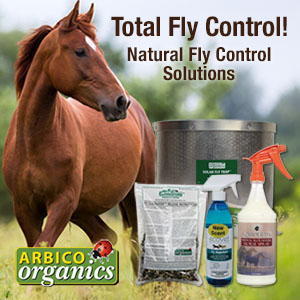
Due to their inquisitive nature, a well-developed flight response, their large size, and that they are commonly confined in areas with potential obstacles such as metal or wire, horses tend to be accident prone, making both minor and major wounds a fairly common occurrence. At first glance, the severity of your horse’s wound(s) can be deceiving. Large wounds often bleed profusely and appear to be worse than they are; but if they only involve superficial structures, then these wounds will typically heal with minimal scarring. In contrast, small wounds overlying (or near) a joint or tendon, for example, are far more serious due to the potential for the underlying structures to be involved and become infected.
Preparation is the Key
Effectively providing first aid to an injured horse necessitates having access to a fully stocked first aid kit in an easily accessible location. Kits can be purchased preassembled or can be easily created. Essential items include but are not limited to:
- Clean towels or sterile cotton rolls to stop a wound from becoming more contaminated and to apply pressure to stop bleeding.
- Vetwrap or stable wraps to hold the towels or cotton in place.
- A flashlight to closely examine a wound.
- Bandage, scissors, digital thermometer, and stethoscope to monitor horse’s vitals for indications of infection).
- Up-to-date vaccination records for all horses in the barn should also be readily accessible.
Of particular interest in the vaccination records is the tetanus vaccine status. Tetanus is a potentially fatal neurological disease caused by toxins produced by the bacterium Clostridium tetani. According to the American Association of Equine Practitioners, tetanus is a core vaccine that should be administered annually.
Immediate First Aid
Place your horse in a quiet, well-lit area to examine the wound. Be cautious as pain and fear can cause even the quietest, most predictable horse to behave in ways it normally wouldn’t. Use clean or sterile towels to apply pressure directly to the wound to stop or slow the flow of blood. Try to avoid repeatedly wiping blood from the area as this will result in additional trauma to the tissues, slower clotting, and might contaminate the wound with foreign materials. Once bleeding is under control, attempt to locate the exact anatomic location of the wound.
It is not advisable to apply tourniquets or cold hose wounds. This latter intervention can increase wound contamination and force foreign material even farther into the wound. In most cases, less is more. Simply wrap the wound to minimize additional contamination, apply steady pressure to slow or stop the bleeding Keep your horse quiet, and wait for your veterinarian. Not all wounds require a frantic call to your veterinarian, but most wounds will benefit from professional evaluation.
Profuse bleeding is another indication that your horse requires more immediate attention from your veterinarian. For horses, the term, “profuse” refers to a large volume of blood. Horses have approximately 10 gallons of blood and can lose approximately 4 gallons and still survive. Any amount of blood flowing freely from a horse will appear to be profuse, so think in terms of buckets of blood to help put the situation in perspective. If bleeding does not appear to be abating or cannot be staunched with compression, an artery could be severed that will require surgical ligation (i.e., the process of tying off a blood vessel with suture material).
Serious wounds generally require advanced management. Some horses will need to be referred to a local clinic and placed under general anesthesia to explore and treat the wound. If the wound involves a joint, tendon, or tendon sheath, advanced surgical repair, or extensive lavage (washing) of the wound could be indicated. Ultrasonography and radiographs (X rays) might be necessary to assess the integrity of nearby structures, to rule out fractures or tendon injuries, or even to locate larger foreign bodies (e.g., pieces of wood).
Related Articles & Free Email Newsletter Sign Up
How Proper Diet Can Prevent a Common Cause of Horse Colic
How Stall Cleaning Impacts Stable Air Quality
What a Horse Does With Its Tail Tells You a Lot




Comment here